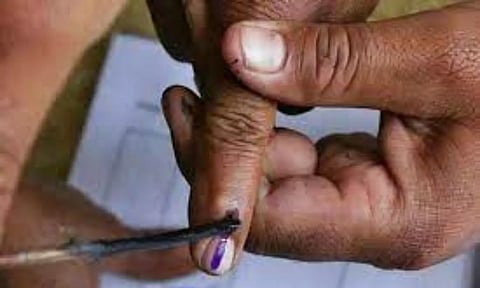

CHENNAI: The role of technology has become more pronounced in reshaping the way political campaigns are conducted and elections are contested. About a decade ago, even social media was just entering into the electioneering space. Back then, very few realised its potential to transform the political landscape. Today, it’s all pervasive in elections and campaigning, influencing voter engagement and shaping public opinion. Similarly, a new contender is emerging – Generative Artificial Intelligence (AI).
This cutting-edge technology is not merely a buzzword; it has the potential to revolutionise political strategies, engagement and decision-making processes, much like social media did in its early days. At the heart of generative AI’s impact on elections lies its ability to process vast amounts of data. For instance, in a diverse and dynamic state like Tamil Nadu, where opinions vary across regions, communities, and demographics, harnessing the power of data is key to crafting targeted and effective political campaigns.
Some of the practical examples of generative AI in action are:
Predictive analytics in campaign strategy
In a recent national election, a political party employed generative AI for predictive analytics. The AI algorithms sifted through massive datasets, analysing social media trends, news articles and public sentiment. Through this, the party gained insights into emerging issues and shifts in public opinion. Armed with this information, the party adapted its campaign strategy on real-time basis, addressing issues that mattered most to the electorate. The result was a more responsive and dynamic campaign, highlighting the potential of generative AI in shaping election strategies.
Predictive analytics with generative AI - A weather forecast for politics. How exactly does it work?
Predictive analytics with generative AI transforms political campaigning by leveraging vast amounts of data. Imagine it as a behind-the-scenes powerhouse that analyses everything from social media posts to news articles, figuring out what people care about and how they feel about it.
Generative AI uses fancy algorithms to not only understand the current sentiments, but also to predict future trends. So, if there’s a sudden buzz about a certain issue or a candidate gaining popularity, the campaign can catch that wave and respond in real-time.
Think of it like a weather forecast for politics. Predictive analytics helps campaigns see the clouds forming before it starts raining votes. This isn’t just about reacting to what’s happening; it’s about being one step ahead, making smarter decisions based on where public opinion is headed. It’s like having a political crystal ball, helping campaigners adapt and stay relevant in the fast-changing world of politics. But, of course, it’s not all magic. There are important things to consider, like making sure people’s privacy is respected, keeping an eye on any biases in the system and being transparent about how this tech is being used.
As the state gears up for polls, the integration of generative AI into campaigns is like adding a supercharged engine – it’s about making decisions smarter, faster and with an eye on what really matters to the people. In a world where every vote counts, predictive analytics with generative AI isn’t just a tool; it’s the compass guiding campaigns through the unpredictable seas of politics, helping them navigate toward success.
Personalised voter engagement
Another noteworthy example comes from a regional election where a political candidate harnessed generative AI for personalised voter engagement. The candidate’s team utilized AI algorithms to analyse data on individual voters, including their online activities, preferences and concerns. This information was then employed to tailor campaign messages and outreach efforts to resonate with specific voter segments. This personalised approach not only increased voter engagement, but also demonstrated a keen understanding of the diverse needs of the electorate.
By employing generative AI for personalised voter engagement, campaigns can connect with diverse voter segments on a more individual level, fostering a deeper understanding of their concerns and building stronger connections with the electorate.
Ethical considerations
While the possibilities of bringing generative AI into our elections appear exciting, there are challenges and ethical considerations; to name a few, data privacy, algorithmic biases and tech misuse.
As Tamil Nadu gears up for a big electoral moment, imagine the game-changer – generative AI joining the political scene. We’re talking about a whole new way of doing elections, from smart decision-making with data to getting up close and personal with voters using predictive analytics. The possibilities are huge!
But let’s not dive in headfirst. We’ve got to step into this AI-driven political world with cautious optimism, making sure we’ve got ethical rules and safety nets in place. The future of democracy in Tamil Nadu is pretty much tied up with how we responsibly and creatively use generative AI. Finding that sweet spot is the key to unlocking its full potential for the people.
Aspire K Swaminathan Entrepreneur, former secretary AIADMK IT Wing